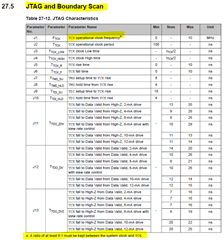TM4C team,
Our customer is having some problems accessing the TM4C129 memory during programming over JTAG. The board has a crystal on it that normally is used to drive the System clock in their application. I know the TM4C129 also has the internal oscillator PIOSC. There is a concern about whether the external crystal (or the associated pins) could be related to the problem during JTAG programming.
Can you confirm that during JTAG programming, the TM4C will not use the external crystal oscillator?
Does it rely on PIOSC or something else?
Thanks,
Darren



